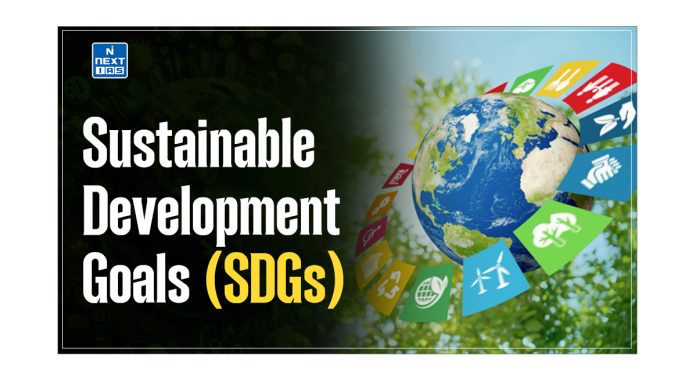Indirect Taxes form a key component of a country’s Taxation System as well as Fiscal Policy. Vital for government revenue generation and economic regulation, they play a crucial role in funding essential public services. This article of NEXT IAS aims to study in detail the Indirect Tax, including its meaning, types, significance, and criticisms. Various types of indirect taxes such as Excise Duty, Customs Duty, Sales Tax, Service Tax, Goods and Services Tax (GST), and other related concepts such as Cascading Effect and Value Added Tax (VAT) are dealt with in detail in the article.
What is Tax?
- Taxes are involuntary fees levied on individuals, businesses, or corporations that are enforced by a government entity, whether local, regional, or national.
- Thus, they are compulsory levies payable by an entity to the government.
- Taxes are the basic source of revenue for the government which is utilized by the government for its various expenses such as Defence, Healthcare, Education, and different infrastructure facilities like roads, dams, highways, etc.
Read our detailed article on the Taxation System.
Indirect Tax
- Indirect Tax refers to the type of tax for which the Impact of Tax and Incidence of Tax fall on different persons or entities.
- Indirect Taxes are, generally, imposed on goods and services.
- They differ from direct taxes because they are not levied on a person who pays directly to the government. Instead, they are levied on products/services and are collected by the person selling the product.
- Indirect Taxes in India are administered by the Central Board of Indirect Taxes and Customs (CBIC), which is a part of the Department of Revenue (under the Ministry of Finance).
| Direct Tax – Direct Tax refers to the type of tax that is borne by a person/entity on whom it is levied. – Thus, in this case, the Impact of Tax and the Incidence of Tax fall on the same person or entity. a. In other words, the burden of a Direct Tax cannot be shifted to another person or entity. |
Read in detail about the Types of Taxes.
Features of Indirect Tax
Some of the prominent features of Indirect Tax can be seen as follows:
- Tax on Consumption: Indirect taxes are levied on the consumption of goods and services, rather than directly on a person’s income.
- Paid Indirectly: Unlike direct taxes, which are paid directly by the taxpayer to the government, indirect taxes are collected by an intermediary, such as a seller or service provider, and then passed on to the government.
- Regressive Nature: They tend to be regressive, because everyone pays the same amount for a given product or service, regardless of their income level.
- Broad Base: They typically have a broad tax base, as they are imposed on a wide range of goods and services consumed by the population.
- Impacts Spending Patterns: They can affect consumer spending patterns, as the final price they pay for goods and services includes the tax.
Types of Indirect Tax
- Some prominent examples of Indirect Taxes in India include:
- Excise Duty
- Customs Duty
- Sales Tax
- Service Tax
- Goods and Services Tax (GST)
- Octroi and Entry Tax
- Toll Tax
- Stamp Duty
- Each of these indirect taxes is discussed in detail in the sections that follow.
Excise Duty
- Excise Duty was a tax that used to be levied on goods for their production, licensing, and sale in India.
- In other words, it was a fee that manufacturers had to pay for certain items they produced.
- Though paid by the manufacturer initially, it was ultimately collected from a customer by a retailer or an intermediary in the form of higher prices.
- It was, mainly, levied by the Central Government. So, it was also called Central Excise Duty or Central Value Added Tax (CENVAT).
- However, it is to be noted that some excise duties were levied by the State Government as well, such as Excise Duty on Alcohol and Narcotics.
- Most of the excise duties have, now, been subsumed under the Goods and Services Tax (GST).
- Excise Duty for most products has been mostly replaced by Central GST (CGST).
- However, some excise duties are still levied separately from the Goods and Services Tax (GST), such as:
- Excise Duty on Liquor (which is levied by State Governments).
- Excise Duty on Petroleum Products (which is levied by the Central Government).
Customs Duty
- Customs Duty is a tax that is imposed on imports as well as some exports of goods.
- It is to be noted that Customs Duty is levied on almost all goods that are imported into the country. On the other hand, Customs Duty is levied only on a few items as mentioned in the Second Schedule of the Customs Tariff Act, 1975.
- Customs Duty is levied and collected by the Central Government.
- The major objectives of Customs Duty are:
- To prevent illegal imports and exports of goods.
- To protect indigenous industries
- To keep imports at a minimum level in order to keep the exchange rate stable.
Types of Customs Duty in India
Some major types of Customs Duty imposed in India are explained in the sections below.
Basic Customs Duty
Basic Customs Duty refers to the Customs Duty levied on imported goods under the Customs Act, 1962.
Additional Customs Duty or Countervailing Duty (CVD)
- Additional Customs Duty or Countervailing duty (CVD) is an additional import duty imposed on imported products when such products enjoy benefits like export subsidies and tax concessions in the country of their origin.
- It is to be noted that Countervailing Duty (CVD) is imposed on some selected imported goods only, and not on all imports.
- The decision to impose Countervailing Duty (CVD) is taken by the Ministry of Finance based on the recommendation of the Director General of Trade Remedies (DGTR).
Anti-Dumping Duty
- Dumping is said to occur when the goods are exported by a country to another country at a price lower than its selling price in the country of origin.
- This is an unfair trade practice that can have a distortive effect on international trade.
- Anti-Dumping Duty is an import duty imposed by one country on goods that are being dumped by another country.
- It aims to rectify the distortive trade effect arising out of the dumping of goods.
- Anti-Dumping Duty differs from Countervailing Duty in the following way:
- Countervailing Duties are to counter low cost and low price due to the subsidy provided.
- Anti-Dumping Duty is to counter voluntary low prices to capture the market.
- The use of Anti-Dumping Duty as an instrument of fair competition is permitted by the WTO.
Export Duty
- Export Duty refers to the customs duty levied on the export of goods.
- The main purpose of this duty is to restrict exports of certain goods.
Sales Tax
- Sales Tax was a consumption-based indirect tax imposed by the government on the sale of goods and services.
- It was levied at the point of sale, collected by the retailer, and passed on to the government.
- In India, sales tax was collected by both the central and state governments:
- State Sales Tax
- This was the primary sales tax that people encountered.
- Individual state governments levied their own sales tax rates on the sale of goods within their borders.
- Central Sales Tax (CST)
- This tax used to apply to interstate sales of goods (i.e. from one state to another).
- It was levied by the central government and intended to ensure a smoother flow of goods across state lines.
- Most of the Sales Taxes have, now, been subsumed under the Goods and Services Tax (GST).
Service Tax
- Service tax was an indirect tax levied by the Central Government on specific service transactions provided or agreed to be provided within the country.
- It was collected by the service providers and ultimately deposited with the Central Government.
- It has, now, been subsumed under the Goods and Services Tax (GST).
Goods and Services Tax (GST)
- The Goods and Services Tax (GST) is a form of Indirect Tax levied on most of the goods and services sold in India for domestic consumption.
- It is based on the principle of Value Added Tax (VAT) and is applicable throughout India.
- It is paid by consumers, but it is remitted to the government by the businesses selling the goods and services.
- The Goods and Services Tax (GST) was introduced and enforced across the country on 1st July 2017.
- It has subsumed and replaced various indirect taxes that were previously levied by the central and state governments.
Read our detailed article on Goods and Services Tax (GST).
Entry Tax and Octroi
- Entry tax is a tax levied on goods entering a state or local jurisdiction from another state or jurisdiction for consumption, use, or sale.
- Octroi is a local tax collected on goods when they enter a municipal area for consumption, use, or sale.
Toll Tax
- Toll tax is a fee charged for the use of certain roads, bridges, tunnels, or other infrastructure.
- This tax is typically collected to help fund the construction, maintenance, and operation of the infrastructure, ensuring that those who benefit from its use contribute to its costs.
Stamp Duty
- Stamp duty in India is a tax levied by the state government on various legal documents related to property transactions.
- The tax is named for the physical stamp that is affixed upon the document to indicate that the duty has been paid.
Advantages of Indirect Tax
- Convenience in Collection: As compared to Direct Taxes, Indirect Taxes are relatively easier to collect. This is because they are collected at the point of sale or consumption, thus reducing administrative costs and compliance burdens for both taxpayers and the government.
- Low Evasion: As these taxes are included in the prices of goods and services, consumers can’t evade paying them. Thus, they help lower evasions, which is quite prominent in the case of direct taxes.
- Revenue Stability: Revenue from these taxes is less affected by economic fluctuations compared to that from direct taxes, which depend on individual income levels and corporate profits.
- Transparency: Usually, these taxes are mentioned in the price tags, enabling consumers to see the tax they are paying. This promotes transparency in the taxation system.
- Used for Policy Objectives: Indirect taxes can be used by governments to achieve various policy objectives, such as discouraging the consumption of harmful goods (sin taxes), promoting certain industries (tax incentives), or addressing environmental concerns (carbon taxes).
Disadvantages of Indirect Tax
- Regressive Nature: Everyone pays an equal amount of Indirect tax for a given product or service, regardless of their income level. Thus, it disproportionately affects lower-income individuals who have to spend a larger portion of their income on taxable goods and services.
- Inflationary Impact: These taxes are often included in the price of goods and services, leading to higher costs for consumers. Thus, they have an inflationary impact.
- Distortion of Consumers’ Choices: They can distort consumer behavior by making certain goods and services more expensive.
- Cascading Effect: In some cases, indirect taxes can lead to a cascading effect where tax is levied on tax, increasing the overall tax burden on consumers.
- Impacts on Global Competitiveness: High indirect taxes can make domestically produced goods more expensive, affecting their competitiveness in international markets. This, in turn, has a negative effect on exports.
Conclusion
Indirect Taxes are a crucial aspect of a nation’s tax system, playing a vital role in revenue generation, and influencing economic behavior. While they offer significant benefits in terms of fiscal stability, they also present challenges related to compliance, economic distortion, and political feasibility. Effective management and continuous reforms in the indirect tax system are necessary to address the evolving economic landscape and societal needs.
Cascading Effect
- In the context of taxation, the Cascading Effect refers to a situation where a tax is levied on an amount that already includes a previous tax.
- This leads to a snowball effect, where the tax burden gets progressively larger at each stage of production or distribution.
- For example, consider the production of a Cotton Shirt.
- First, cotton is bought by a spinning mill owner, who pays sales tax on it.
- So, the purchasing cost for the mill owner = price of cotton + sales tax on cotton.
- The spinning mill owner processes the cotton into yarn and sells it to a weaver. The weaver pays sales tax on it.
- So, the purchasing price for weaver = price of cotton + sales tax on cotton + value added by spinner + sales tax on the whole value.
- First, cotton is bought by a spinning mill owner, who pays sales tax on it.
- Thus, it can be seen in the above example that the tax amount already paid also gets taxed at every stage of the process and continues till the end product.
- This is called the Cascading Effect.
Principle of Value Added Tax or VAT Principle
- In the context of taxation, the principle of Value Added Taxation or the VAT principle avoids the cascading effect by repaying back the different processors in a production chain the taxes paid by them on their respective inputs.
- The repaid back tax is called Input Tax Credit (ITC).
- For example, in the example, the spinner is repaid back the sales tax paid by him on cotton. So, the weaver pays tax only on the value added by the spinner.
Central Board of Indirect Taxes and Customs (CBIC)
- The Central Board of Indirect Taxes and Customs (CBIC) is the apex body responsible for administering indirect taxes as well as customs duties in India.
- It is a part of the Department of Revenue under the Ministry of Finance.
- The CBIC is tasked with the formulation and implementation of policy concerning the levy and collection of indirect taxes, such as Goods and Services Tax (GST), Central Excise duty, Customs duty, and Service Tax.




